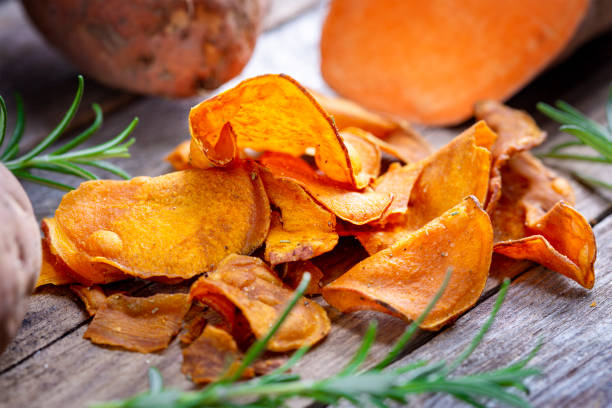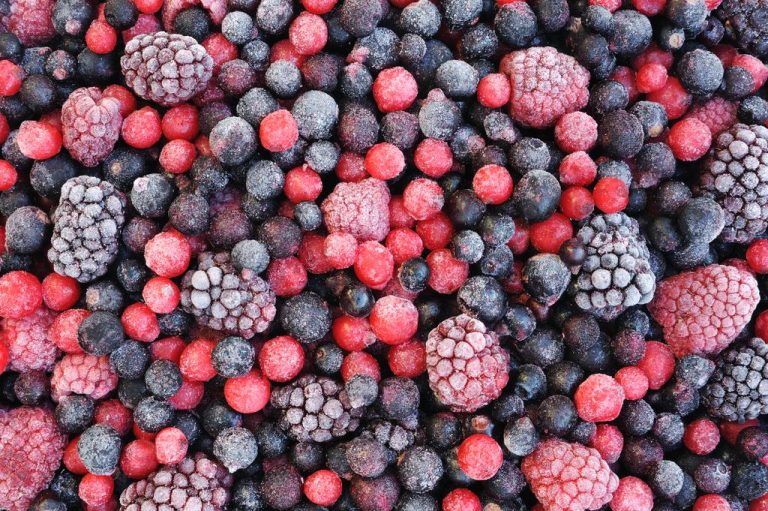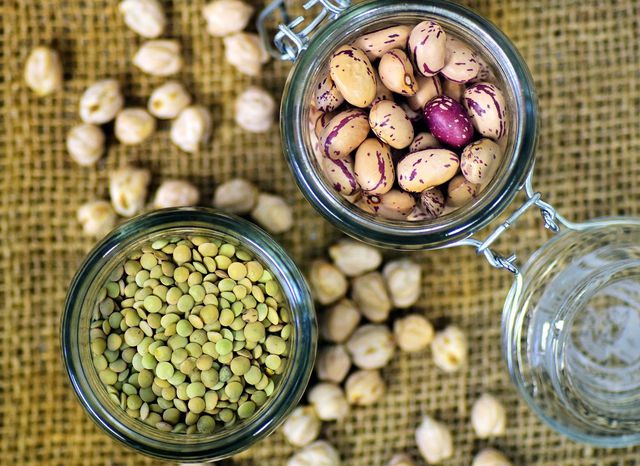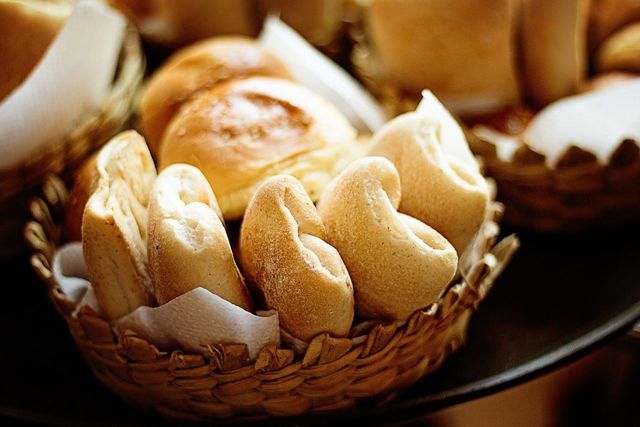Getting enough fiber is not difficult with the right foods. Our overview will help you to create a varied diet rich in fiber.

Dietary fiber – that’s why it’s so important
Although dietary fibers provide our body with hardly any nutrients and are mostly excreted undigested, they play a crucial role in our health:
Dietary fiber is particularly important for digestion, as it supports good intestinal flora, prevents constipation and stimulates digestion.
A high-fiber diet prevents colon cancer.
Fiber has a positive effect on cholesterol and blood sugar levels.
Because fiber swells up in the digestive tract, it ensures that your food fills you up well and for a long time. This is how you avoid ravenous hunger attacks.
Dietary fiber is mainly found in plant foods. The German Society for Nutrition recommends consuming 30 grams of fiber per day. With a high-fiber diet, it is important to drink enough – two to two and a half liters of water and/or unsweetened tea daily are necessary so that the dietary fibers in the intestine can swell well.
High-fiber foods at a glance
If you eat a varied and balanced diet, you don’t need to worry about getting enough fiber. Most of the high-fiber foods are probably already on your daily menu:
Vegetables, especially cabbages, carrots and potatoes
Fruit and dried fruit such as apples, pears and berries
Whole grain products such as whole grain bread or pasta
Legumes such as beans and lentils
nuts and seeds
Below we take a closer look at the food categories: The lists tell you which types of fruit and vegetables provide the most fiber, which types of grain and legumes are particularly recommended, and which nuts and seeds have the highest fiber content. Last but not least, we introduce you to the superfoods among the high-fiber foods.
Animal products are not included in our overview: Not only are they a poor source of dietary fiber, they are also ecologically and ethically problematic. Eating a vegan diet is the easiest and healthiest way to get enough fiber.
Note: We researched the quantities primarily in the United States Department of Agriculture (USDA) database. We have not listed foods that cannot be bought in this country.
The 10 vegetables with the highest fiber content
Since vegetables consist largely of water, the fiber content is comparatively low per 100 grams. However, vegetables contain a lot of fiber per 100 kilocalories. That’s why many types of vegetables are ideal for a high-fiber diet – and provide lots of valuable vitamins, minerals and secondary plant substances.
Topinambur and potatoes lead the list here, although they contain a comparatively large number of calories. In addition, various types of beans, cabbage and other root vegetables are particularly rich in fiber.
High-fiber vegetables (values per 100 grams):
Jerusalem Artichoke: 12.1 g
Potatoes: 8 g
Artichoke: 6 g
Parsnip: 5 g
Pumpkin: 5 g
Brussels sprouts: 4 g
Cabbage & Kale: 4 g
Spinach: 4g
Carrots: 3g
Cauliflower: 3g
Sweet potatoes: 3 g
Dietary fiber from fruit, berries and dried fruit
There are also some high-fiber contenders among the fruit varieties. When it comes to local fruit, apples and pears score particularly well. There are also some Mediterranean fruits with a high fiber content, such as pomegranates or citrus fruits.
Fruits rich in fiber (values per 100 grams):
Passion fruit: 11 g
Avocado: 7g
Pomegranate: 4 g
Olives: 3 g
Pears: 3 g
Kiwis: 3 g
Figs: 3 g
Apples: 3 g
Limonene: 3 g
Bananas: 3 g
Berries in particular provide a lot of dietary fiber. The good thing about this: All of the frontrunners on the list also grow here in Germany.
High-fiber berries (values per 100 grams):
Elderberries: 7 g
Raspberries: 7 g
Blackberries: 5 g
Blueberries: 5 g
Currants: 4 g
Gooseberries: 4 g
Cranberries: 4 g
Fruit, like vegetables, consists largely of water. Therefore, dried fruit has significantly more dietary fiber per 100 grams than fresh fruit. It is not without reason that prunes are considered a tried and tested remedy for constipation. Since dried fruits contain a lot of sugar, you should eat them sparingly.
High-fiber dried fruit (values per 100 grams):
Goji berries: 13 g
Bananas: 10g
Figs: 10 g
Apples: 9 g
Peaches: 9 g
Dates: 8 g
Pears: 8 g
Apricots: 7 g
Plums: 7 g
Raisins: 7 g
Grain products and flours with the most fiber
Grains should not be missing from a diet with high-fiber foods. However, it is important that you use whole grain products or unpeeled grain seeds, as most of the fiber is in the germ and the shell. You can also buy the grain shells, called bran, separately and add them to your muesli, for example.
High-fiber grains and pseudo-grains (values per 100 grams, in uncooked form):
Corn bran: 79 g
Wheat bran: 43 g
Rice bran: 21 g
Barley: 17 g
Oat bran: 15 g
Rye: 15 g
Wheat and wheat germ: 13 g
Spelled: 11 g
Oats: 11 g
Buckwheat: 10 g
Millet: 9 g
Corn: 7 g
Quinoa: 7g
Amaranth: 7 g
Wild rice: 6 g
Whether you want to buy good high-fiber bread from the bakery or want to bake a healthy cake, whole wheat flour is always a better option. While whole wheat flour contains eleven percent fiber, wheat flour type 550 consists of just four percent fiber.
High-fiber flours (values per 100 grams):
Rye flour, grist: 14 g
Wheat flour, whole grain: 11 g
Barley flour, whole grain: 10 g
Buckwheat flour, whole grain: 10 g
Spelled flour, whole grain, 8 g
Corn flour, whole grain: 7 g
Oatmeal, whole grain: 6 – 9 g
Rice flour, whole grain: 5 g
Millet flour, whole grain: 4 g
Wheat flour, white flour: 4 g
Fiber in legumes – the 15 best foods
Beans, peas, lentils: legumes still rarely end up on the plate in this country. There is a lot to be said for them – including their high fiber content. The list is headed by various types of beans, closely followed by green peas and chickpeas. But red and brown lentils also have a very high fiber content. It is important to remember that the values apply to the food in uncooked form. For example, dried peas have 22 grams of fiber per 100 grams, but cooked ones “only” have a proportion of eight grams – because they absorbed water during cooking.
High-fiber legumes (values per 100 grams, in uncooked form):
Helmet beans: 26 g
Snap beans: 25 g
Broad beans: 25 g
Kidney beans: 25 g
White beans: 25 g
Green peas: 22 g
Lima beans: 19 g
Lupins: 19 g
Mung beans: 18 g
Black beans: 16 g
Pigeon peas: 15 g
Chickpeas: 12 g
Lentils: 11 g
Cowpeas: 11 g
Soybeans: 9 g
Nuts and seeds – Good sources of fiber
Last but not least, when it comes to the foods richest in fiber, nuts and seeds cannot be left out. Most kernels, nuts and seeds contain a lot of fiber – but also a lot of calories and fat. Therefore, you should only consume them in moderation.
Fiber-rich seeds and nuts (values per 100 grams):
Chia seeds: 34 g
Flaxseed: 27 g
Pumpkin seeds: 18 g
Almonds: 14 g
Sesame seeds: 12 g
Sunflower seeds: 11 g
Pine nuts: 11 g
Pistachios: 11 g
Hazelnuts: 10 g
Pecans: 10 g
Macadamia nuts: 9 g
Walnuts: 8 g
Sweet chestnuts: 5 g
Hemp seeds: 4 g
Cashew nuts: 3 g
Superfoods: The pinnacle of dietary fiber
In the following list you will find the most high-fiber foods of all. In addition to the already mentioned representatives such as flax and chia seeds, you will also find some unexpected foods here, such as spices and cocoa powder. Not all of the foods on this list are therefore viable for meeting the daily fiber requirement.
Foods with the highest fiber content (values per 100 grams):
Bran: corn bran 79 g, wheat bran 43 g
Binding agents such as guar gum & locust bean gum 77 g
Judas ear (mushroom) 70 g
Flea seed shells 70 g
Spices: curry powder & cinnamon 53 g, savory 45 g, rosemary & oregano 43 g and much more.
carob flour 40 g
Cocoa powder 37 g
Chia seeds 34 g
Flaxseed 27 g
Rose hips 24 g












